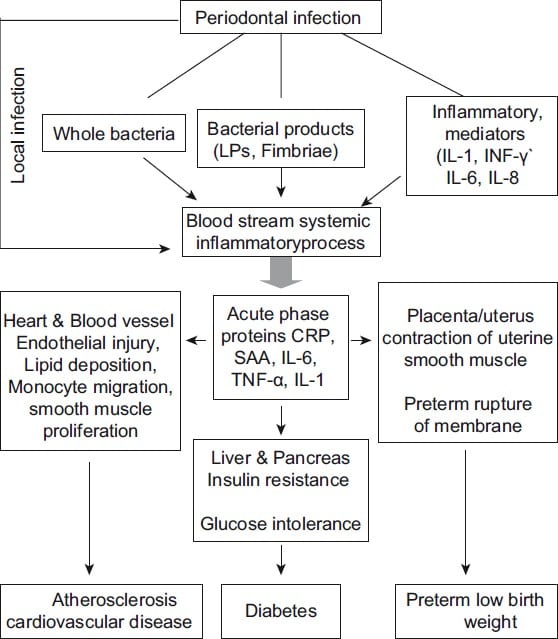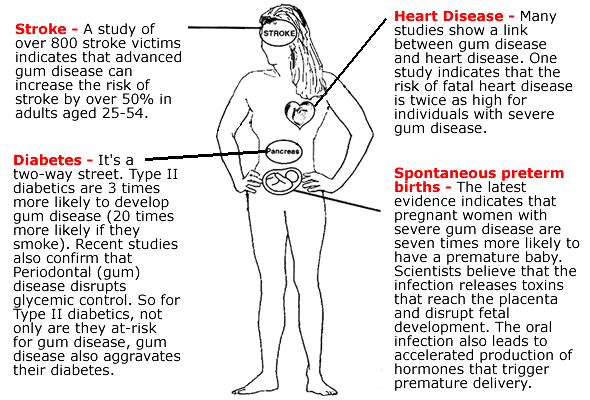In this Article, We explain the relationship of gum diseases ( periodontal ) to other disease, in addition we define it in details, explain its causes and provide with the proper treatments.
Gum Diseases’s Relation to Other Diseases
Definition
Periodontal is a word meaning “around the tooth.” Periodontal disease is a condition in which the tissue (gums, deeper supporting tissue, and bone) around a tooth or teeth become infected and inflamed. Periodontal disease includes both Gingivitis and periodontitis.
Causes
Periodontal disease such as gingivitis and periodontitis is a silent disease that can lead to tooth loss, cancer, heart attacks, strokes, and the list goes on. It is estimated that about 85 percent of the population has some stage of the disease. Periodontal disease may start in your mouth, but can spread throughout your body and cause or increase the risk of many life-threatening illnesses.

Our mouths are full of bacteria. These bacteria, along with mucus and other particles, constantly form a sticky, colorless “plaque” on teeth. Brushing and flossing help get rid of plaque. Plaque that is not removed can harden and form “tartar” that brushing doesn’t clean. Only a professional cleaning by a dentist or dental hygienist can remove tartar.
Although bacteria are the main cause of periodontal disease, there are many other factors that can cause periodontitis such as:
- Pregnancy
- Genetics
- Poor diet/nutrition
- Certain medications
- Stress
- Diabetes
- Smoking
Prognosis
- The longer plaque and tartar are on teeth, the more harmful they become. The bacteria cause inflammation of the gums that is called “gingivitis.” In gingivitis, the gums become red, swollen and can bleed easily. Gingivitis is a mild form of gum disease that can usually be reversed with daily brushing and flossing, and regular cleaning by a dentist or dental hygienist. This form of gum disease does not include any loss of bone and tissue that hold teeth in place.
- When gingivitis is not treated, it can advance to “periodontitis” (which means “inflammation around the tooth”). In periodontitis, gums pull away from the teeth and form spaces (called “pockets”) that become infected. The body’s immune system fights the bacteria as the plaque spreads and grows below the gum line. Bacterial toxins and the body’s natural response to infection start to break down the bone and connective tissue that hold teeth in place. If not treated, the bones, gums, and tissue that support the teeth are destroyed. The teeth may eventually become loose and have to be removed.
Symptoms
Symptoms of periodontal disease include
- gums that are red swollen and bleed easily (e.g when you brush or clean between your teeth)
- gums that have seen to pulled away from your teeth
- constant bad breath
- pus between your teeth and gums
- teeeth that seem to lose or moving away from one another
- change in the way your teeth fit together when you bite
Treatment
The treatment and management of periodontal disease involves lifestyle changes, medications, other treatments, alternative and complementary therapies, and possibly surgery.
The goals of treatment of periodontal disease include:
- Controlling the underlying infection
- Halting destruction of the gums, tissues, and bones that support your teeth
- Avoiding potential tooth loss
Sources
- Third Age
- http://periodontaldiseasesblog.wordpress.com/ by Dr. Fiza Saeed



1 Comment
Very informative, keep it up 🙂